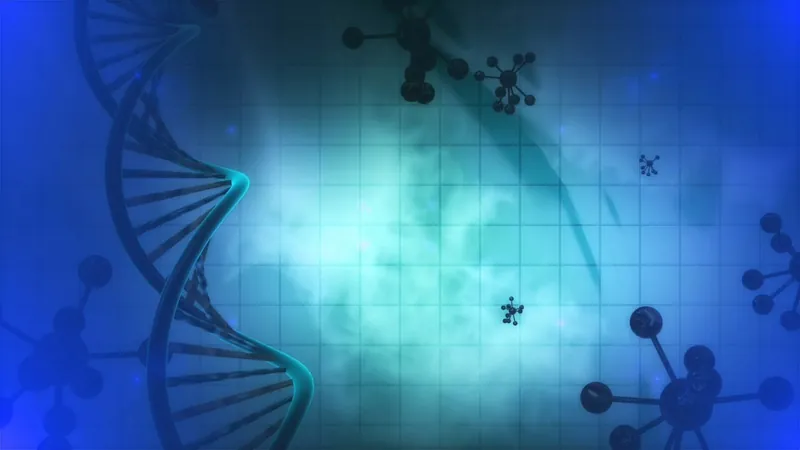
Revolutionizing Drug Discovery: Unlocking Lysine-Targeting Covalent Inhibitors
2025-04-23
Author: Noah
A Breakthrough in Drug Discovery
A groundbreaking study recently published in *Angewandte Chemie International Edition* reveals a novel approach to discovering lysine-targeting covalent inhibitors, which could change the landscape of drug development. Led by Lu Xiaojie of the Shanghai Institute of Materia Medica, with collaborations from Fudan University and Zhejiang University, this research harnesses the power of cutting-edge technologies to explore new therapeutic avenues.
The Power of Covalent Drugs
Covalent drugs are game-changers in pharmacology, working by forming persistent bonds with target proteins, effectively modulating their activities over time. While cysteine-targeting drugs have been prominent, the use of lysine as a binding site opens doors to a wider range of potential drug targets, circumventing the limitations posed by cysteine availability.
Harnessing CoDEL Technology for Inhibitor Discovery
The innovative CoDEL (covalent DNA-encoded chemical library) technology has emerged as a pivotal platform for drug discovery. Lu Xiaojie's team previously utilized this technique to find cysteine-targeting inhibitors and has now brilliantly integrated it with activity-based protein profiling (ABPP) to embark on discovering lysine-targeting inhibitors.
An Efficient Strategy for Selection
Despite the promising potential, the researchers recognized that an efficient CoDEL platform specifically for lysine-targeting inhibitors was lacking. The prevalent nature of lysine in the human proteome made random target selection impractical, prompting an innovative solution.
The team combined their compound-based and warhead-based ABPP data to curate a protein dataset rich in reactive lysine residues. This strategic dataset formation led to the design of CoDELs comprising an astonishing 10.7 million compounds, all targeting lysine.
Discovering Promising Compounds
Covalent selection led to the discovery of several lysine-targeting covalent inhibitors. Notably, Compound 1 acts as a photo-covalent probe for the active site of phosphoglycerate mutase 1 (PGAM1), while Compound 4 successfully binds reversibly to a new site on bromodomain family proteins.
Perhaps the most fascinating is Compound 9, which irreversibly binds to UBE2N, causing significant conformational shifts in the UBE2N/UBE2V2 complex. This action disrupts polyubiquitin chain formation, offering a fresh strategy for controlling the ubiquitination pathway.
A New Era in Covalent Drug Discovery
This study not only introduces an efficient selection platform for lysine-targeting covalent inhibitors but also enhances the strategic design of covalent drugs. By merging proteomic data with CoDEL technology, the research presents a formidable advancement in drug discovery, promising to expand the possibilities for treating a variety of diseases.









 Brasil (PT)
Brasil (PT)
 Canada (EN)
Canada (EN)
 Chile (ES)
Chile (ES)
 Česko (CS)
Česko (CS)
 대한민국 (KO)
대한민국 (KO)
 España (ES)
España (ES)
 France (FR)
France (FR)
 Hong Kong (EN)
Hong Kong (EN)
 Italia (IT)
Italia (IT)
 日本 (JA)
日本 (JA)
 Magyarország (HU)
Magyarország (HU)
 Norge (NO)
Norge (NO)
 Polska (PL)
Polska (PL)
 Schweiz (DE)
Schweiz (DE)
 Singapore (EN)
Singapore (EN)
 Sverige (SV)
Sverige (SV)
 Suomi (FI)
Suomi (FI)
 Türkiye (TR)
Türkiye (TR)
 الإمارات العربية المتحدة (AR)
الإمارات العربية المتحدة (AR)